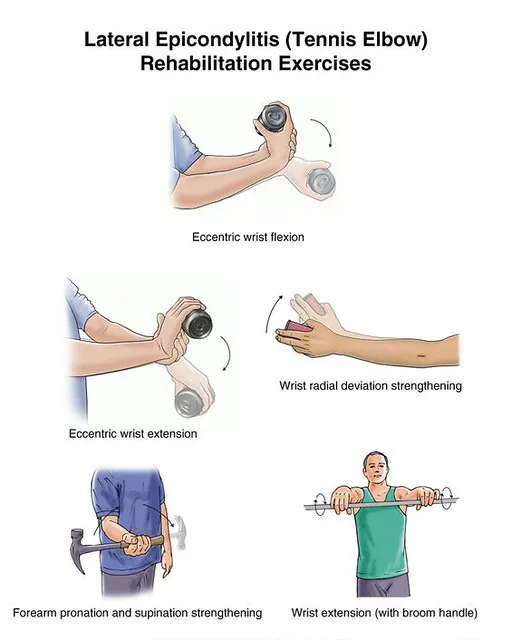Ever wondered how to prevent tennis elbow while kayaking? It’s a common concern among outdoor enthusiasts and for good reason. Tennis elbow, scientifically known as lateral epicondylitis, doesn’t just afflict tennis players. It can also arise from activities like kayaking due to the repetitive stress on the forearm muscles. Let’s dive straight into some expert advice to keep you paddling without pain.
Understanding Tennis Elbow and Its Impacts
Tennis elbow, or lateral epicondylitis, is a common repetitive motion injury that causes significant discomfort. This condition stems from overuse of the muscles and tendons of the forearm, leading to elbow inflammation and pain. For kayakers, this repetitive strain can turn a refreshing paddle session into a painful ordeal.
According to the Mayo Clinic, tennis elbow symptoms include pain and tenderness on the outside of the elbow, which can extend into the forearm and wrist. This pain is often exacerbated by activities that involve gripping or lifting objects.
Why Kayakers Are at Risk
Kayaking involves continuous paddling motions that can strain the forearm muscles and tendons. Over time, this can lead to arm strain and, ultimately, tennis elbow. The repetitive nature of paddling, combined with the force exerted, makes kayakers particularly susceptible to this condition.
Furthermore, improper paddling techniques or equipment can exacerbate the risk. For instance, using a paddle that’s too short or too long can put additional stress on your arm muscles, increasing the likelihood of developing this orthopedic condition.
Recognizing the Symptoms Early
Early detection of tennis elbow can prevent it from becoming a chronic issue. Symptoms to watch out for include:
- Forearm pain that worsens with activity
- Weak grip strength
- Soreness around the elbow joint
- Difficulty lifting or holding objects
If you experience any of these symptoms, it’s crucial to take immediate action to avoid further elbow treatment.
Effective Elbow Exercises to Prevent Tennis Elbow

Source: Flickr
Regular exercises can strengthen the muscles around your elbow, reducing the risk of injury. These exercises can be performed at home with minimal equipment. Here are some effective exercises:
| Exercise | Description |
|---|---|
| Wrist Extension | Hold a light weight in your hand, palm facing down. Slowly raise and lower your hand while keeping your forearm steady. |
| Wrist Flexion | Hold a light weight in your hand, palm facing up. Slowly raise and lower your hand while keeping your forearm steady. |
| Forearm Pronation and Supination | Hold a light weight or a hammer in your hand. Rotate your forearm so your palm faces up and down alternately. |
Perform these exercises regularly to build strength and prevent elbow rehabilitation issues. For more guidance, check out this video on 3 Home Exercises for Tennis Elbow.
Proper Kayaking Techniques to Avoid Elbow Strain
Using the right techniques while kayaking can significantly reduce the risk of developing tennis elbow. Here are some tips:
Maintain Proper Posture
Sit upright with your back straight and engage your core muscles. This posture helps distribute the paddling force evenly across your body, reducing the strain on your arms.
Use the Correct Paddle Length
Ensure your paddle is the right length for your height and the type of kayaking you’re doing. A paddle that’s too short or too long can cause improper paddling techniques, leading to elbow pain relief issues.
Engage Your Core
Instead of relying solely on your arms, use your core muscles to power your strokes. This reduces the load on your forearm muscles, preventing tendonitis and other related injuries.
Take Regular Breaks
Don’t push yourself too hard. Take breaks to rest your muscles and avoid overuse injuries. This is especially important during long kayaking sessions.
Using Elbow Braces and Supports
Elbow braces and supports can provide additional stability and relief. These aids are particularly useful if you’re recovering from a sports injury or want to prevent one.
According to OrthoInfo – AAOS, wearing an elbow brace can help reduce strain on the affected tendons and muscles. Here’s a quick guide:
Choosing the Right Brace
Look for a brace that offers adjustable compression and fits comfortably around your elbow. It should provide support without restricting your movement.
Wearing the Brace Correctly
Position the brace just below your elbow joint, where the muscles attach to the bone. This placement helps alleviate stress on the tendons and promotes healing.
Elbow Rehabilitation and Therapy

Source: Pexels.com
If you’ve already developed tennis elbow, don’t lose hope. Effective elbow therapy and rehabilitation can get you back on track. Here are some steps to follow:
Rest and Ice
Give your elbow a break. Resting allows the inflamed tendons to heal. Applying ice packs can also reduce elbow inflammation and pain.
Physiotherapy
Engage in physiotherapy sessions to strengthen the affected muscles and improve flexibility. A trained physiotherapist can guide you through specific exercises tailored to your condition.
Medications
Over-the-counter pain relievers, such as ibuprofen, can help manage pain and reduce inflammation. Always consult a healthcare professional before starting any medication.
Surgical Options
In severe cases, where conservative treatments fail, surgery might be necessary. This involves removing the damaged tissue and repairing the tendon. However, this is usually considered a last resort.
Preventing Chronic Elbow Pain

Source: Pexels.com
Preventing chronic elbow pain requires a proactive approach. Here are some strategies to keep your elbows healthy:
Regular Stretching
Incorporate stretching exercises into your routine to maintain flexibility and prevent stiffness. Focus on stretching your forearm muscles and tendons.
Strength Training
Strengthen your arm muscles to support your joints better. Use resistance bands or light weights to perform exercises that target your forearms and upper arms.
| Activity | Benefit |
|---|---|
| Yoga | Improves flexibility and reduces stress on joints |
| Swimming | Provides a low-impact workout that strengthens muscles |
| Pilates | Enhances core strength and overall body stability |
Ergonomic Adjustments
Make ergonomic adjustments to your paddling technique and equipment. Ensure your kayak and paddle are suited to your body size and paddling style.
Listen to Your Body
Pay attention to any signs of discomfort or pain. Addressing issues early can prevent them from becoming chronic problems. Don’t ignore persistent pain; seek professional advice if needed.
Key Takeaways
- Early detection of tennis elbow symptoms can prevent chronic issues.
- Regular elbow exercises strengthen muscles and reduce injury risk.
- Proper kayaking techniques are crucial to avoid forearm pain.
- Elbow braces and supports provide additional stability and relief.
- Effective elbow rehabilitation can alleviate pain and promote healing.
Preventing tennis elbow while kayaking might seem challenging, but with the right knowledge and practices, it’s entirely possible. By understanding the condition, adopting proper techniques, and taking care of your body, you can enjoy kayaking without the fear of elbow pain. Remember, it’s all about balance, both in your kayak and in your approach to health.
Frequently Asked Questions (FAQs)
Q: Is squeezing a ball good for tennis elbow?
A: Yes, squeezing a ball can be beneficial for tennis elbow as it helps strengthen the forearm muscles. However, it’s essential to start with a soft ball and gradually increase resistance. Always ensure you’re not causing additional pain during the exercise.
Q: How do you fix a tennis elbow?
A: Fixing tennis elbow involves a combination of rest, ice application, physiotherapy, and specific exercises to strengthen the affected muscles. In some cases, wearing an elbow brace and taking anti-inflammatory medications can help. Severe cases might require surgical intervention.
Q: How do you get instant relief from tennis elbow?
A: Instant relief from tennis elbow can be achieved by applying ice packs to reduce inflammation and taking over-the-counter pain relievers. Resting the affected arm and avoiding activities that exacerbate the pain are also crucial.
Q: What not to do with tennis elbow?
A: Avoid activities that involve repetitive arm movements, such as lifting heavy objects, playing racket sports, or paddling. Don’t ignore the pain or push through it, as this can worsen the condition. Always follow a proper rehabilitation plan and consult a healthcare professional if necessary.

